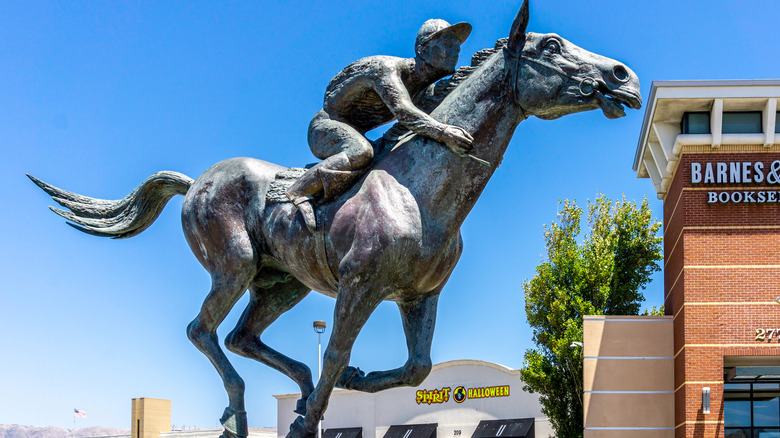How Historically Accurate Is The Movie Seabiscuit?
A large number of the movies that hit the screens in cineplexes every year are, as the tagline will often read, "based on a true story." Actual historical events have, for decades, been a well from which Hollywood screenwriters will draw inspiration, and "true" (to one degree or another) stories have consistently been big box-office draws. "True" movies about war, crime, sporting events, etc. make for fantastic source material for the silver screen.
Of course, reality and film are two completely different things, and what makes for compelling drama in one context doesn't necessarily work in the other. As such, filmmakers often take shortcuts, conflate characters, rearrange the timing of events, or perform other alterations to reality in order to make its depiction on the screen easier to consume.
One example of this type of fiddling with reality for the sake of a good film comes in the form of the 2003 film "Seabiscuit," supposedly the true story of a racehorse who inspired Depression-ravaged America through sheer grit, per IMDb. Although the film gets the basis of the story correct, it takes several liberties, including making up a few scenes out of whole cloth.
Changes to the real Seabiscuit story
The basic outline of "Seabiscuit's" plot mostly sticks to the reality of the story, reports The Washington Post. He was a real horse, deemed too small to be a contender, who came from obscurity to challenge Man O' War, also a real horse (via Horse Racing Sense), in a one-off race that served as a sort of metaphor for America facing the Great Depression. His jockey truly was a quiet and circumspect man named Red Pollard, and his owner and trainer were both as depicted in the film.
Director and writer Gary Ross did take some dramatic license here and there. For example, an injury Pollard sustained actually took place months before the big race, not on the eve before, as depicted in the film. Similarly, the film depicts him recovering from his injury just in time to run his big race, while in fact he'd made several practice races on the horse before the Santa Anita Handicap.
Indeed, it was the depiction of the Santa Anita Handicap in which the movie takes the greatest detour from reality. As ESPN notes, the film depicts Seabiscuit as dramatically coming from the rear of the field to win, when in actuality, he was never that far from first place.

